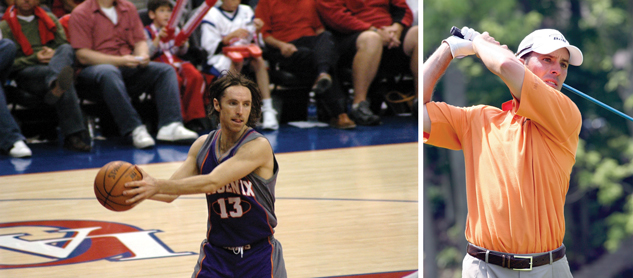Module 6 Intro
1. Module 6 Intro
1.14. Page 5
Module 6—The Motor System and Homeostasis
 Reflect and Connect
Reflect and Connect
Basketball player Steve Nash and golfer Mike Weir are only two of many prominent Canadians who have excelled in their chosen field of athletics. Through a careful monitoring of diet and exercise, their motor systems have reached a state of near perfect homeostasis that has allowed them to reach the top of their chosen sports.

Left: Photo courtesy Justin McAllister (Steve Nash/basketball)
Right: © Barry Salmons/shutterstock (Mike Weir/golfer)
A superior motor system is just one aspect of their success. In addition to physiological balance, Weir and Nash have also achieved mental focus and an incredible competitive desire.
 Going Beyond
Going Beyond
Virtual Lab on Muscle Stimulation
Skeletal muscle fibres may be divided into two general categories—slow-twitch or Type I fibres, and fast-twitch or Type II fibres. The fast-twitch fibres can be further subdivided into Type IIa, or intermediate fast-twitch fibres, and Type IIb fast-twitch fibres. The characteristics of these various fibres play a major role in their function in the different physical activities that people undertake every day. These muscle types are explained on pages 346 and 347 of the textbook.
Now put your understanding of muscle contraction and muscle twitch into a laboratory context by performing the Virtual Lab on Muscle Stimulation. Investigate the experimental problem, “How does increased workload affect a skeletal muscle’s threshold of stimulation?”
Open the lab, and read the Purpose, Objectives, and Procedure for the experiment. Follow all instructions including recording your data in the Table and answering the Analysis questions in the Journal.
 Module 6: Lesson 2 Assignment
Module 6: Lesson 2 Assignment
Remember to submit the Assignment answers to your teacher as part of your Module 6: Lesson 2 Assignment.